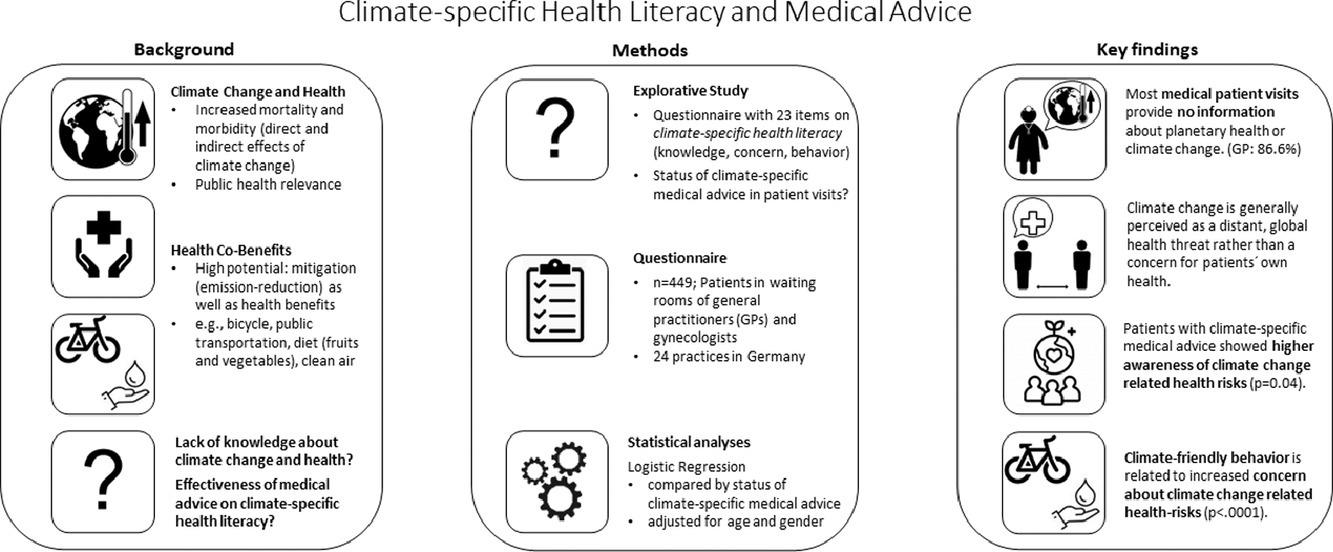The evolution and development of a Center for the Environment and Health at one large academic hospital, as one model for approaching climate change in the healthcare environment.
The paper investigates the current state of climate-specific healthy literacy in patients and the impact of climate-specific medical advice on patients’ behavior regarding health co-benefits.
A "train the trainer" approach to facilitate incorporation of climate-content into residency curriculum.
An assessment of personal heat exposure measures and strategies to reduce heat risk.
This chapter contributes to SDG 6 by introducing technologies for water desalination.
Presents an overview of the injustice of loss and damage, discusses the complexities and knowledge gaps, and proposes next steps for an interdisciplinary research agenda.
Organoids are three-dimensional, functional structures that mimic in vivo organs. They offer new opportunities for the modeling of cancer and infectious and rare hereditary diseases. Furthermore, the advent of organoid biobanks opens new avenues for drug screening in a personalized fashion and holds much promise for personalized regenerative medicine. Thus, there is a need for reproducible, large-scale organoid generation with minimal variability, making manual approaches impracticable. Here, we review the current use of automation in organoid culture and analysis, using cerebral and retinal organoids as illustrations of current applications. An increased demand for automated organoid platforms is anticipated.
This book chapter advances SDG3 Good Health and Wellbeing and SDG10 Reducing Inequalities by focusing on the minimization of impairments and the disabling consequences of disease.
Elsevier,
Long-Acting Drug Delivery Systems
Pharmaceutical, Clinical, and Regulatory Aspects
Woodhead Publishing Series in Biomaterials
2022, Pages 163-202
This content aligns with Goal 3: Good Health and Wellbeing by highlighting the significant role of long-acting drug delivery systems in improving the management of gynecological cancers, AIDS, and other pathological conditions, along with updates for the systems that are already present on the market such as contraceptive methods and AIDS prophylaxis.
Elsevier,
Bone Sarcomas and Bone Metastases - From Bench to Bedside (Third Edition), Bone Sarcomas and Bone Metastases - from Bench to Bedside, 2022, Pages 17-23
Examines the economic impact of bone metastasis for patients with cancer. Supports SDG 3.4.1 to 3.4 , reduce by one thirdmortality rate attributed to cardiovascular disease, cancer, diabetes or chronic respiratory diseases.

